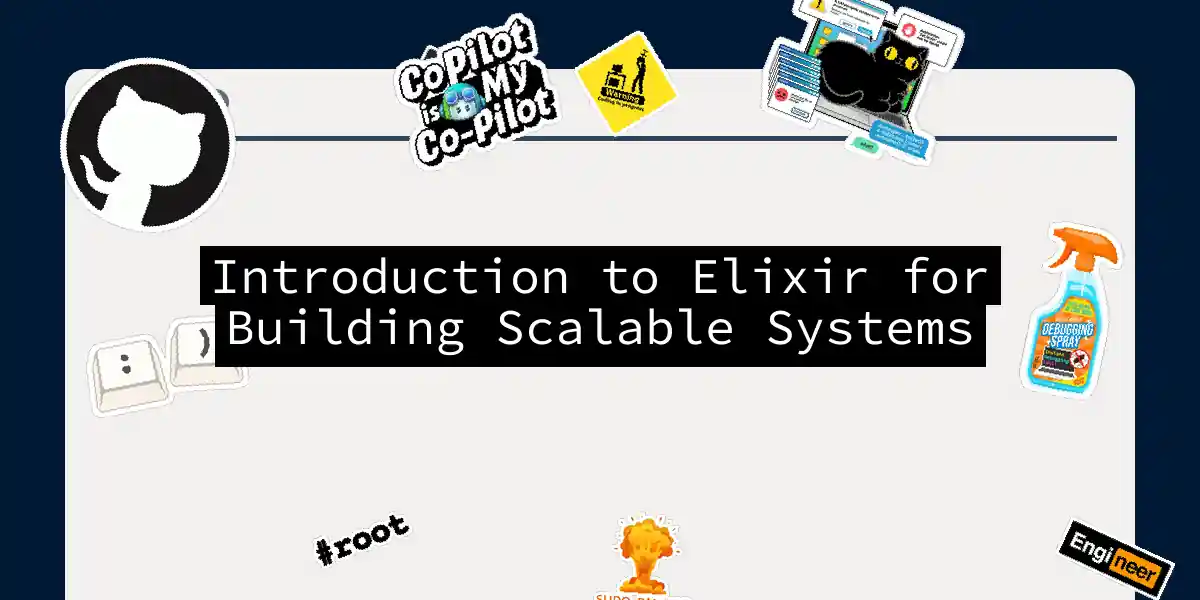Introduction to Elixir
Elixir is a dynamic, functional programming language that has been gaining popularity for building scalable and maintainable applications. It runs on the Erlang Virtual Machine (BEAM), which is renowned for its robust concurrency and distributed computing capabilities. This combination makes Elixir an excellent choice for developing high-performance, fault-tolerant systems.
Key Features of Elixir
Functional Programming: Elixir encourages a coding style that is concise, readable, and maintainable. It supports immutability by default, which is crucial for scalability as it ensures that data remains consistent across different processes[1][2].
Scalability: Elixir can handle a massive number of concurrent processes efficiently, thanks to the Erlang VM. This allows developers to build highly scalable applications that can grow with business needs[1][3].
Fault Tolerance: Elixir inherits Erlang’s robust supervision system, which enables automatic recovery from failures by restarting parts of the system to a known good state[1][2].
Metaprogramming: Elixir’s macro system allows for powerful code generation and domain-specific language creation, making it highly extensible[3].
Concurrency Model: Elixir uses the Actor Model for concurrency management, treating ‘actors’ as isolated units that communicate via messages[2][5].
Setting Up Elixir
To start with Elixir, follow these steps:
Install Elixir: Visit the official Elixir website for installation instructions tailored to your operating system[3].
Learn the Basics: Start with the official Getting Started guide to grasp the language fundamentals[3].
Explore Phoenix: Once comfortable with Elixir, dive into the Phoenix framework for building web applications[3].
Join the Community: Connect with other developers through the Elixir Forum or Slack channel for support and insights[3].
Building Scalable Systems with Elixir
Functional Programming in Elixir
Functional programming is at the heart of Elixir. It promotes the use of pure functions and immutability, which are essential for maintaining state consistency across concurrent processes. Here’s a simple example of a recursive function in Elixir:
defmodule Math do
def factorial(0), do: 1
def factorial(n), do: n * factorial(n - 1)
end
This example demonstrates how Elixir uses pattern matching to elegantly handle different conditions.
Concurrency with the Actor Model
Elixir’s concurrency model is based on the Actor Model, where each actor (or process) is an isolated unit that communicates with others via messages. This model ensures that there is no shared state between actors, making it easier to manage concurrency without locks or synchronization primitives.
Here’s a basic example of creating and sending messages between processes in Elixir:
defmodule Messenger do
def start_link do
Task.start_link(fn -> loop() end)
end
defp loop do
receive do
{:message, msg} -> IO.puts(msg)
_ -> IO.puts("Unknown message")
end
loop()
end
def send_message(pid, msg) do
send(pid, {:message, msg})
end
end
# Usage
pid = Messenger.start_link()
Messenger.send_message(pid, "Hello, Elixir!")
Fault Tolerance with Supervisors
Elixir’s fault-tolerance capabilities are powered by supervisors, which define how to restart parts of the system when failures occur. This ensures that the system can recover to a known good state automatically.
Here’s a simplified example of using a supervisor in Elixir:
defmodule MySupervisor do
use Supervisor
def start_link do
Supervisor.start_link(__MODULE__, [])
end
def init(_args) do
children = [
%{
id: MyWorker,
start: {MyWorker, :start_link, []},
restart: :permanent
}
]
Supervisor.init(children, strategy: :one_for_one)
end
end
defmodule MyWorker do
use GenServer
def start_link do
GenServer.start_link(__MODULE__, nil)
end
def init(_args) do
{:ok, nil}
end
def handle_info(:crash, _state) do
# Simulate a crash
raise "Crashed"
end
end
# Usage
MySupervisor.start_link()
In this example, if MyWorker crashes, the supervisor will automatically restart it.
Understanding Elixir’s Concurrency Model
To better visualize how Elixir handles concurrency, consider the following sequence diagram:
This diagram illustrates how processes communicate and how a supervisor intervenes in case of a failure.
Elixir Tooling and Ecosystem
Elixir comes with a robust set of tools that make development efficient and enjoyable:
Mix: A build tool for creating, managing, and testing projects. It integrates well with the Hex package manager for dependency management[1].
IEx: An interactive shell that provides features like auto-completion, debugging tools, and code reloading[1].
Livebook: An interactive notebook that allows you to run Elixir code directly from your browser, supporting features like plotting and data tables[1].
Conclusion
Elixir offers a unique combination of scalability, fault tolerance, and concurrency, making it an attractive choice for developers looking to build modern, high-performance applications. Its modern syntax and interoperability with Erlang libraries further enhance its appeal. Whether you’re building web applications, embedded systems, or data pipelines, Elixir provides the tools and ecosystem to help you succeed. So, dive into Elixir today and discover how it can transform your approach to software development
